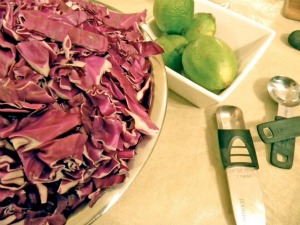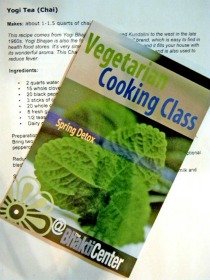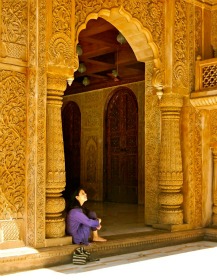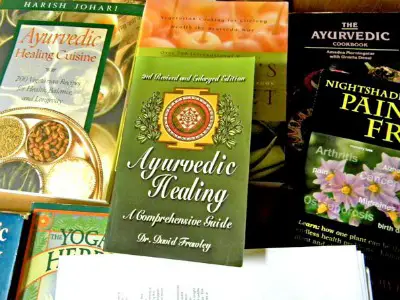| Back to Back Issues Page | |||
 |
|||
|
CONNECT TO YOUR BODY: AYURVEDIC COOKING, The Dance Thinker, Issue #19 May 24, 2012 |
|||
The Dance Thinker Issue # 19, MAY 24, 2012
1.CONNECT DEEPER TO YOUR BODY THROUGH AYURVEDIC COOKING
https://www.contemporary-dance.org/The_Dance_Thinker-ayurvedic-cooking.html
We have: - A page for contemporary dance announcements in which you can post your news about workshops, auditions, performances, meetings or any current, related items. - A contemporary dance blog where you can find current information and that will automatically distribute what you post in the announcements page to facebook, twitter and all subscribers to the site’s RSS feed. - A worldwide contemporary dance directory of schools, companies, scholarships and related websites to which you can also submit your contact information. - A special page for asking dance questions. - Several pages in which you can participate with contributions like articles, reviews, questions, comments or even ratings. - An archive for THE DANCE THINKER back issues, where you can always revisit precedent issues from our e-zine. - A contact page through which you can address to me directly if you have questions, ideas, wishes, suggestions or comments.
News
You all know that deep information about the Release technique on the web is very limited. I wrote that page to answer to repeated questions that I was receiving on the topic. I hope it provides some basic information but it would be great if we gather more data about it together. Don’t hesitate to share any articles, videos or related material about the Release technique through contemporary-dance.org. Just contact me, or fill any of the correspondent submission forms. For those who sent your questions, here’s the answer, as promised… ;-) !
As dancers, we all know that ‘balanced feeding’ makes part of our professional commitments. We also know that understanding and finding the best way to achieve this is confusing and difficult in the current western society. Therefore, the question about what to eat or how is common among professionals like us.
For this reason, I didn’t miss the opportunity to interview Carolina Daza, a Yoga teacher who seriously includes feeding as part of her own health routines. Carolina completed a Master's of Arts, Culture and Feeding at New York University, studied at the Yoga Institute (the oldest Yoga school of the world in Mumbai, India) and spent a summer at the kitchen of NOMA, in Copenhagen (ranked for three consecutive years as the best restaurant of the world). Today, Carolina applies Ayurvedic cooking principles to feed her self. For those who are unfamiliar with Ayurveda, it is India’s millenary medicine and knowledge. Its philosophical groundings come from the so called ‘eastern’ world, which differ significantly from our ‘western’ popular beliefs and customs. So, for those of you interested in rethinking or deepening your understanding of feeding possibilities, here’s an introduction to Ayurvedic cooking. As this is a health matter, I believe it is delicate. Please understand this material as an informative proposition that can allow us to compare and question our own manners. It is in no way my personal invitation for you to embrace it as a practice and should not ever replace your own medical advice.
Carolina Daza: Ayurveda is the millenary Indian medicine originated from the Vedas, India’s sacred books. The Ayurvedic cooking principles are inspired from the medicine. CDO: So, as Ayurveda is a form of medicine, does this mean that the goal of Ayurvedic cooking is health? CD: Yes. The goal is health. For Ayurvedic cooking, good health means good elimination or digestion and human beings are studied holistically by their psychosomatic composition –physical, psychological, physiological, and environmental factors, as well as the quality of life, mental and consciousness. Each human being is studied to determine a particular composition, which establishes different needs for his or her own diet. CDO: So does this mean that ideally this cooking is personalized? CD: Yes, ideally, Ayurvedic cooking inspires one to cook for one self. CDO: What are some of the principles in Ayurvedic cooking? CD: Well, I had the experience of living in an Ashram in New York City with my Ayurvedic teacher. She introduced me to the whole Ayurvedic cooking system and that ultimately inspired me to develop my own cooking principles, that I believe are adaptable to the western lifestyle: 1. There are three types of food: - Saatvic: Intelligent foods. The purest of all, charged with life’s vital energy (Prana) and includes foods in its more natural state. They could be raw or cooked in a way that does not make them loose their saatvic qualities. -Rajasic: Dumb foods. Foods that were saatvic but have been frozen or improperly cooked and have lost all of its Prana. -Tamasic: Dead foods. Processed or frozen foods that have lost all of its Prana; these usually include all fast foods.
As the Dalai Lama mentioned in his “Paradox of our Age: we are eating faster foods but having much slower digestions”. Ayurvedic cooking is focused towards improving this kind of issues. CDO: If I understand well, one could survive from Tamasic food. What would be missing in that kind of food? CD: Those kinds of food provide no Prana or nutrients. They have lots of carbohydrates, sugars, salts and/or chemical substances that we would never eat if they weren’t mixed within that food. A person can be overfed but have no Prana or nutrients and will eventually develop biological dysfunctions.
2. Eating organic food. This does not mean food that comes with the seal ‘organic’ over the tin. It means foods that are honestly free of chemicals (fertilizers and pesticides) and that have not been genetically modified. According to the Ayurvedic principles, we are what we eat, and all that we put over our external bodies will permeate in our internal world (shampoos, body creams, deodorants and soaps) because it all affects our whole system. Media controls in a significant way our food culture, it has a great impact on the way people conceive healthy eating, for example many mothers believe that a processed ready-to- eat fruit compote is more nutritious than a home made fresh fruit compote. These are clear examples of today’s healthy eating confusions. 3. COOK. Preparing your own food with all your consciousness and love. 4. Use of spices. Cardamom, cloves, turmeric, anis star, dried ginger, coriander seeds, fennel seeds, nigella grains, cumin… there are so many. They are essential in a saatvic diet, especially as it regulates the digestive system. 5. Having the five tastes in dishes: sweet, salty, acid, astringent, bitter and spicy. 6. Freshly squeezed limejuice and coriander to top every cooked dish.
CDO: According to your experience, what are the effects of Ayurvedic cooking on yourself? CD: Healthy cooking and eating, whether you are a dancer, a yoga practitioner or a sportsperson, are interdependent and essential to one’s wellbeing. Eating healthfully and cooking naturally inspires a conscious connection between all food processes and one’s own soul. Sadly, it is radically different from what eating means for the average western person. In Ayurvedic cooking you maintain total consciousness with the food that you are not only cooking but also eating. One has the opportunity to feel the Prana that permeates in the body, mind and soul. Personally, I feel a greater vitality; I wake up naturally at five a.m. without any tiredness; I sleep deeply; I maintain a balanced process of elimination and also feel that my body-mind consciousness increases; my memory is much clearer and I feel lighter with more energies. Through this cooking-eating processes I have discovered the way my body asks me for a vegetarian and almost vegan diet. I have nothing against animal protein based diets, but through this Ayurvedic journey I have explored, discovered, and learned to cook many vegetables that are invisible to the majority, and have experimented and created recipes that truly feed your body and soul. CDO: You touch an algid point there, as you know how ferocious western criticism is towards vegetarianism. What’s your opinion and how could it be justified? CD: Ayurvedic principles are based on each person’s bodily constitution. In my case, I’m in a continuous exploration for a better life quality. If you travel to India, you might find your self amongst hundreds of people who have been vegetarians since they were born and according to their principle of ahisma (non-violence) killing an animal for food is unconceivable. Furthermore, it is proved that meat protein can be replaced by grains and algae, such as spiruline and organic soy based products. The real problem lies in our current western food culture. It is evident that the average person from the western rich countries face feeding problems nowadays but it is the responsibility of each one to do the research. CDO: Going back to the subject of the Ayurvedic cooking effects over the body, have you maybe felt that this practice improves your flexibility? CD: In my case, yes. My body feels much lighter and it feels peaceful. The spine relaxes better and my muscle tension is released. But that is something that has happened to me gradually with the implementation of the yoga practice as well, including meditation. However, I can not assure that this would happen to everybody. CDO: So, how would a classic Ayurvedic daily diet be, for example? CD: It would be like this:
5.00: water with lemon and a piece of fresh, peeled aloe vera with a tablespoon of honey. 9.30 -10.00: A medium size portion of fruit (any type). 11.00: A medium size portion of homemade granola and yogurt with a spice like cardamom. 14.30: Balanced dish composed of a fresh salad, hot vegetables, a cereal, a grain and chutney (which is a spiced sweetened sauce). 18.30 – 19.00: Something light, like a herbal soup or a yogurt.
CDO: I believe that an average person of our western culture would think that what is described in your daily diet is not enough food. Don’t you feel hungry? CD: Amazingly not. I feel completely satisfied. Before following this kind of diet, I used to eat much more and I was constantly anxious and felt that it was not enough. Nowadays, I am able to understand the way media and our food culture has had an impact on my food consciousness. When one develops an honest consciousness of balanced dishes and allow our bodies significant time to digest and assimilate the foods, energies are potentialized in our body. In western culture, the belief is that one has to be constantly eating to have enough energy, not allowing the digestive system of the body to rest; it’s like a machine that never rests and one that eventually will break up one day.
According to Ayurvedic principles, fasting once a week is extremely healthy and recommended to detoxify the body. One has to understand that this is also about the control of your mind and it has nothing to do with physical aesthetics. I recently came from India where I had the amazing opportunity to study and learn from vegetarian yoginis at The Yoga Institute in Mumbai city. At their ashram, the Ayurvedic cooking principles are followed and teachers, as well as students have an amazing vitality and energy. I was particularly impressed by an 86 years old teacher who ate very small quantities of food but who was more active than many. CDO: Just to finish now, could you share a simple recipe with us? CD: Off course. Here’s a simple recipe, inspired in the Aloe Vera, one of our ‘super-foods’, for a great salad and vinaigrette: Vinaigrette: - One freshly squeezed lime - One teaspoon of olive oil - Three whole peppercorns - One medium piece of aloe vera Mix and blend it all together. The salad: - Fresh chard - Fennel (chop the base as like with a green apple) - Coriander seeds
As far as it concerns me, I completely agree with the idea of adjusting the diet to each person. One can understand why cooking your own food is desirable… but as with so many things in dance, it involves discipline, practice and ever-growing levels of consciousness. Now, if Ayurvedic cooking calls your attention, it is up to you to start the research now. As I said at the beginning, this was just an introduction. You can also contact Carolina Daza through her blog, or read her articles at RECONECTA.
Is it important to become thin to do contemporary dance?
If you can not view this message correctly, please copy and paste the following link fully in your browser's address bar:
Remember to feel free to answer this e-mail. Let me know what you think. I’m always opened to comments, suggestions, ideas, wishes...
Editor and Webmaster of contemporary-dance.org
|
|||
| Back to Back Issues Page |




